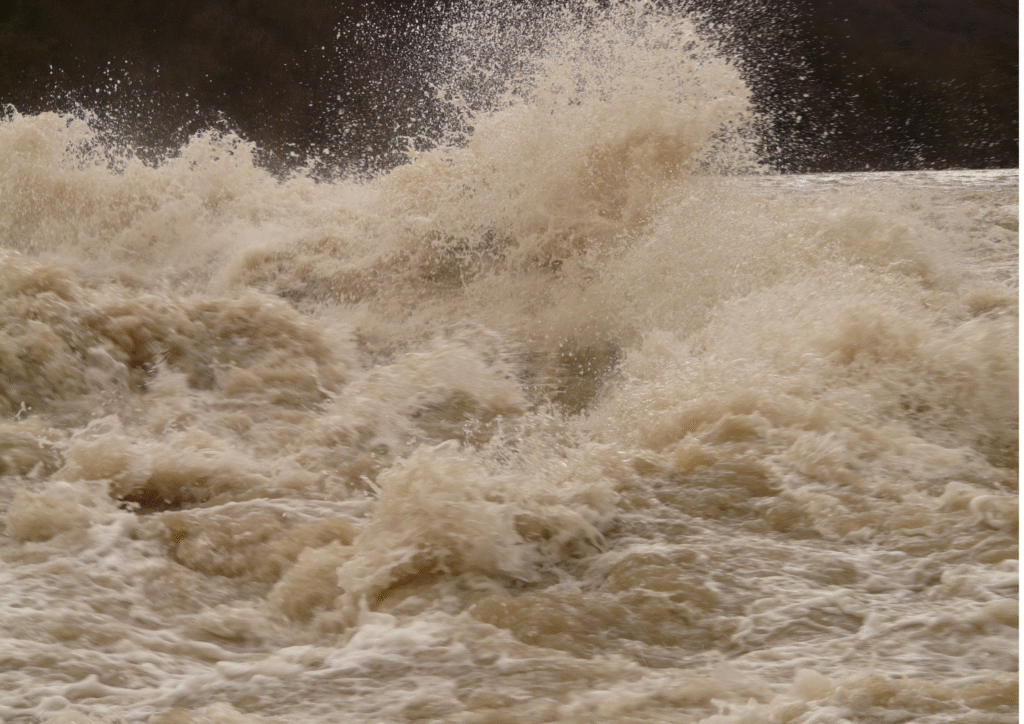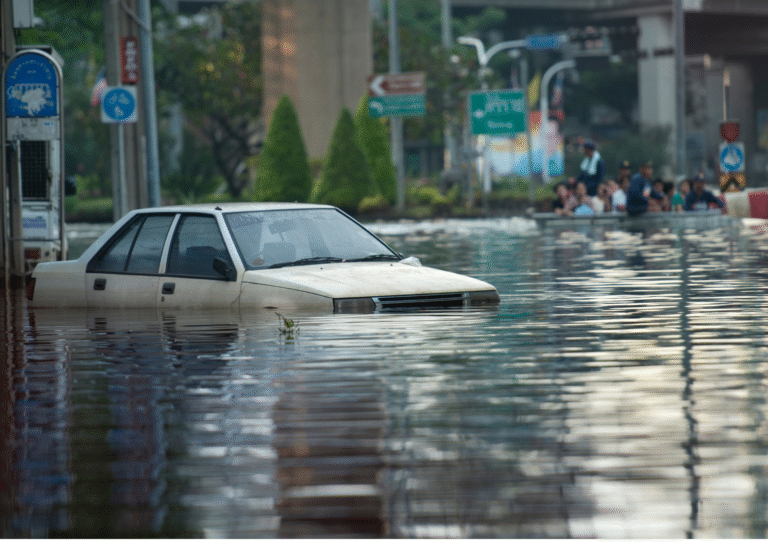
Do You Dread the Next Big Storm?
What is your deepest problem when dark clouds gather, or a sudden downpour begins? Is it the gnawing fear of rising waters, the helplessness as streets turn into rivers, or the terrifying uncertainty of what to do next? You desire to feel safe, prepared, and in control when faced with the unexpected fury of a flash flood. If you keep reading, you’ll cut through the confusion and get closer to solving that problem, understanding vital steps to protect yourself and your loved ones.
Understanding this isn’t just about avoiding inconvenience. It matters more than most people realize because flash floods, unlike broader riverine floods, strike with shocking speed and often in unexpected places. This guide on flash flood safety shows why proactive preparedness is your strongest defense against rising waters. They are becoming more frequent and intense, particularly in our growing urban centers, demanding a shift in our collective and individual mindset towards preparedness.
However, some might argue, “Flooding is something that happens in specific, low-lying areas. My city has a great drainage system, and emergency services are always on top of things. I’ll be fine.” This perspective, while understandable, overlooks the unique, localized, and rapid nature of flash floods. On the other hand, the reality is that extreme rainfall events, fueled by a changing climate, are overwhelming existing infrastructure, turning familiar streets into treacherous waterways in minutes. As a result, personal responsibility and awareness are becoming critically important for survival.
The Relentless Reality of Rising Waters: New York & Texas
Just look at the headlines from the past few days. From the subways of New York City filling with fetid water just hours ago, to the heart-wrenching tragedy of the Texas “Camo Flood” at Camp Mystic that claimed over a hundred lives, communities are facing the devastating power of sudden, torrential downpours. Residents have watched, horrified, as entire neighborhoods became submerged, their lives upended in an instant.
I was scrolling through my feed just yesterday, seeing videos of NYC subway stations becoming impromptu waterfalls, passengers wading through knee-deep water inside train cars. It was surreal. Then I thought about the families in Central Texas, like my distant cousin who volunteers with a local rescue team, who recounted the sheer despair of the Guadalupe River rising 26 feet in just 45 minutes, sweeping away homes and claiming lives at a summer camp. [1, 2] Her voice was hollow as she spoke of the ongoing search, the grim reality that some might never be found. [3] These are not distant news stories. They are immediate, urgent reminders of nature’s raw power.
These aren’t your grandfather’s floods. Climate change is altering weather patterns, leading to more frequent and intense heavy precipitation events across the United States. [4] As a result, the ground, already saturated or paved over, simply cannot absorb the sudden deluges, forcing water to rush across surfaces, gaining destructive momentum. On the other hand, traditional drainage systems, designed for historical rainfall averages, are often overwhelmed, contributing to the rapid rise of water levels in unexpected places.
Why Flash Floods Are Different, and Deadlier
A flash flood isn’t just “a lot of rain.” It’s a wall of water moving at incredible speeds, often carrying debris like trees, cars, and even parts of buildings. Its destructive power comes from its velocity and the sheer force of the water.
In urban areas, the danger is amplified. Cities are covered in impervious surfaces, like concrete and asphalt. This means rain has nowhere to go but to run off, rapidly accumulating and picking up speed. As Dr. Emily Parker, an urban hydrologist, explained in a recent article about urban flooding dynamics:
“Our cities are designed to shed water quickly, but that efficiency works against us when rainfall rates exceed capacity. The water gains incredible momentum on paved surfaces, turning streets into dangerous rapids. It’s like a giant waterslide for debris, and anything caught in it is in grave danger.” [5]
On the other hand, the very infrastructure meant to protect us, such as underpasses and subway systems, can become death traps, filling with water almost instantly. I once saw a video of a city street during a flash flood event where a stray shopping cart floated by, then spun into a drain, and then… it just disappeared. It reminded me how quickly something as innocuous as a quiet street can become a churning, unpredictable beast. You think you’re just looking at a puddle, but it’s a rapidly moving current in disguise, strong enough to sweep away a grown adult. As a result, the phrase “Turn Around Don’t Drown” isn’t just a catchy slogan. It’s a life-saving imperative.
7 Urgent Steps for Urban Resilience
So, what can we do to prepare? While governments and cities work on large-scale infrastructure projects, individual preparedness remains your most powerful tool. Here are seven essential steps to keep yourself safe from flash floods:
- Stay Informed, Always!
- This is your first line of defense. Pay attention to local weather alerts, especially for flood watches and flash flood warnings. Use NOAA Weather Radio, local news, and emergency apps.
- However, don’t rely solely on one source. Cross-check information if you can.
- Know Your Risk, Precisely.
- Find out if your home, work, and frequent routes are in a flood zone. FEMA provides maps. Understand your elevation and the typical flood patterns of your area.
- On the other hand, even outside a designated flood zone, heavy rainfall can cause localized flooding. Be aware of low-lying areas or underpasses that might trap water.
- Create an Emergency Plan, Now.
- Develop a family communication plan. Identify safe meeting points outside your home and neighborhood.
- Plan evacuation routes from your home, work, and school.
- As a result, having a plan reduces panic when seconds count.
- Assemble a Go-Bag, Today.
- Pack a waterproof bag with essentials: bottled water, non-perishable food, first-aid kit, copies of important documents (ID, insurance), medication, a whistle, a flashlight, and extra batteries.
- However, don’t forget practical items like a portable phone charger and a small amount of cash.
- Never Drive or Walk Through Floodwaters, Ever.
- This is perhaps the most critical rule. Six inches of moving water can knock you off your feet. Twelve inches can sweep away most cars. Eighteen inches can carry away SUVs and trucks. [6]
- As a result, the water depth might be deceiving, and the road beneath could be washed away, hiding dangerous debris or open manholes.
- On the other hand, even if the water looks shallow, resist the urge to proceed.
- Elevate Valuables, Proactively.
- If a flood warning is issued or heavy rain is expected, move important documents, electronics, and sentimental items to higher floors or elevated shelves.
- However, don’t wait for the water to enter your home. A little preparation can save irreplaceable items.
- Engage Your Community, Together.
- Talk to your neighbors. Establish a buddy system for checking on elderly or vulnerable individuals. Knowing who might need help, and who can offer it, strengthens everyone’s safety.
- As a result, community preparedness can amplify individual efforts and build resilience.
The Broader Picture: Climate Action & Urban Planning
While individual actions are crucial, it’s also vital to acknowledge the larger forces at play. The increasing frequency and intensity of extreme rainfall events are consistent with projections of climate change. This necessitates not only individual preparedness but also significant investments in resilient infrastructure, improved urban drainage, and sophisticated early warning systems at the municipal and national levels.
However, these large-scale changes take time and resources. On the other hand, the immediate need to protect lives and property remains urgent. As a result, our personal preparedness acts as a critical bridge, safeguarding us while broader solutions are implemented.
Conclusion: Take Control of Your Safety
Flash floods are no longer rare occurrences confined to distant floodplains. They are a growing threat in our urban landscapes, demanding our attention and proactive steps. The terrifying speed and destructive power of these events mean that minutes, even seconds, can make the difference between safety and disaster.
By understanding the unique dangers of flash floods and implementing these seven urgent steps for urban resilience, you empower yourself and your community. Don’t wait for the next storm to hit. Take control of your safety today. Reflect on your own vulnerability, check those flood maps, pack that go-bag, and most importantly, remember: Turn Around Don’t Drown. Your preparedness isn’t just about surviving; it’s about thriving in an unpredictable world.
📚 Sources
- Times of India. “Watch: Subway lines submerged as heavy rain batters New York City; flash flood warnings issued.” Published July 15, 2025. https://timesofindia.indiatimes.com/world/us/watch-subway-lines-submerged-as-heavy-rain-batters-new-york-city-flash-flood-warnings-issued/articleshow/122479905.cms
- Al Jazeera. “Texas flooding: Who are the victims, what’s the death toll, could it rise?” Published July 7, 2025. https://www.aljazeera.com/news/2025/7/7/texas-flooding-what-happened-what-went-wrong-and-whats-the-death-toll
- PBS NewsHour. “Texas families face grim reality that some missing from floods may not be found.” Published July 13, 2025. https://www.pbs.org/newshour/show/texas-families-face-grim-reality-that-some-missing-from-floods-may-not-be-found
- US Environmental Protection Agency (EPA). “Climate Change Indicators: Heavy Precipitation.” Explains how extreme precipitation events are increasing across the U.S. and their link to climate change. https://www.epa.gov/climate-indicators/climate-change-indicators-heavy-precipitation (Accessed July 16, 2025).
- National Academies of Sciences, Engineering, and Medicine. (2018). Urban Flooding in the United States. The National Academies Press. https://nap.nationalacademies.edu/catalog/25083/urban-flooding-in-the-united-states (Accessed July 16, 2025).
- National Weather Service (NWS). “Turn Around Don’t Drown.” Provides crucial safety information and statistics on flood fatalities, emphasizing the danger of driving or walking through floodwaters. https://www.weather.gov/safety/flood-turn-around-dont-drown (Accessed July 16, 2025).




